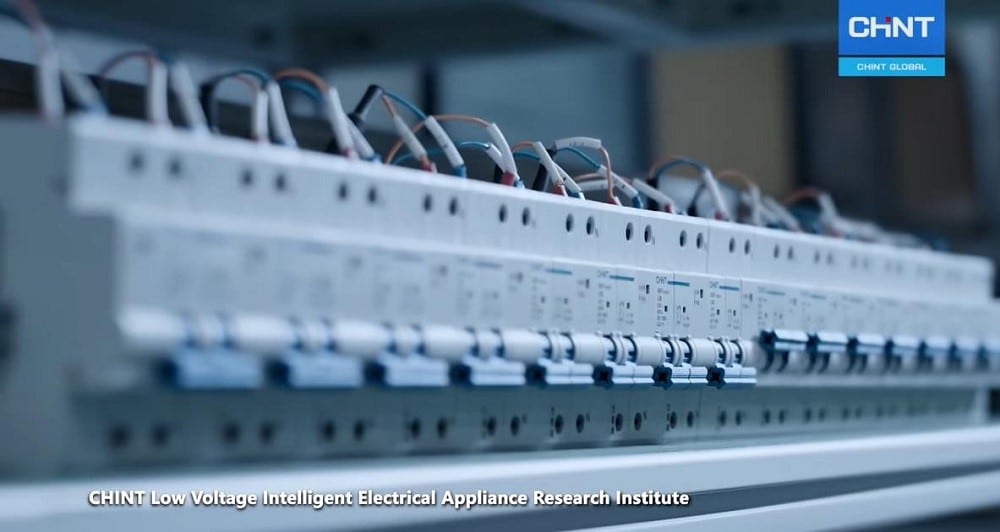Table of Contents |
A Residual Current Circuit Breaker (RCCB) is an indispensable gadget capable of sensing electrical leakage currents and protecting low-voltage circuits. Its operating principles are similar to those of the ELCB (Earth Leakage Circuit Breaker), though ELCB is its most outdated version. RCCBs ultimately offer more reliable protection across the board.
Benefits of Installing an RCCB at Home
To understand just how crucial it is to have an RCCB installed in your home, we should first elaborate a bit on what this circuit breaker is supposed to do. That way, you can make a more informed decision when upgrading your electrical safety device.
A giant web of outdoor power lines feeds our home’s electrical system. It comprehends an intricate set of wires that work together to provide a stable electrical current to all appliances and electricity-powered artifacts.
In a typical scenario, there is a constant balancing out of electrical currents (known as “Kirchhoff’s law”), so the current that flows through a live (phase) wire should equal the current returning through its neutral counterpart.
The RCCB would step in only when there is a slight difference in value between the live and neutral wire readings. The RCCB’s sensor detects this residual current and, subsequently, trips off the circuit in a matter of fractions of a second, preventing damage to people and equipment in the interim.
The importance of having these fail-safes in your home can never be overstated. An earth wire fault, combined with current leakage of significant mA value, can shock a person (with lethal consequences in many cases!)
Old ELCBs only reckoned earth faults through the main earth wire. As a result, if there were any defects in grounding or this earth wire was cut off, the ELCB would stop functioning. On the flip side, RCCBs consider the current passing through the live and neutral wires, not having to rely entirely on the earth wire readings.
For these reasons, all homes nowadays should be equipped with RCCB technologies and do away with their obsolete ELCBs as soon as possible! At this juncture, this is not just a matter of preference.
Furthermore, when browsing for your household RCCB, choose one capable of tripping off circuits with a leakage threshold that would not jeopardize your life (you should consult your trusted electrician.)
30 mA is the maximum current the human body can withstand without serious health repercussions. Currents of up to 10 mA are enough to produce uncomfortable prickling, but when the leakage exceeds 30 mA, you could be put at severe risk when walking barefoot or getting in contact with a faulty electrical device!
Why Get RCCB when MCB is Already Provided?
An MCB (Miniature Circuit Breaker) protects against overloads when there are sudden bursts of electrical power, particularly those potent enough to cause significant damage to appliances, as well as fire hazards.
On the other hand, RCCBs are designed for low-level leakage control. Keep in mind that these leaks are not powerful enough to trigger MCBs, so RCCBs provide a needed extra layer of protection, albeit mostly aimed against electrocution from both indirect and direct contact.
To hammer this point home further, MCBs operate based on “thermal overload” and comprise a series of temperature-sensitive components. Meanwhile, RCCBs work through a CBCT (Core Balance Current Transformer) – a ring- or rectangular-shaped core wound by a magnetic coil – designed for earth fault protection.
So, both RCCBs and MCBs should be used synergically, for both are crucial in securing your home against all perils associated with uncontrolled power surges.
As a side note, RCBOs (Residual Current Operated Circuit Breakers) are touted as all-in-one solutions that protect you on both fronts (overloads and current imbalance). Still, if you have an MCB already in place, you can likely save some money and get a standalone RCCB instead.
Will RCCB Function If Earth Wire is Disconnected
Earthing is still critical for passing all the current surplus to the ground to prevent electrical harm. Touching the live wire with no earth connection might still produce shock! Nevertheless, the RCCB’s tripping mechanism should still work, and the damage would be relative to the RCCB’s sensitivity and tripping time.
Different Ratings of RCCBs
RCCB ratings (or levels) for households are expressed in Amps (e.g., 16 Amps, 20 Amps, etc.), corresponding to load requirements, with tripping sensitivities ranging from 30 and 100 mA.
Electricians recommend modern RCCB types (Type A or similar) with a 32-63A rating and a tripping sensitivity of 30 mA. Most household RCCBs have a sensitivity of 30 mA because that’s how much current the human body can bear within a 300 ms timescale, as we explained earlier.
As we pointed out above, you’d want assistance from a competent electrician to help you find your best rating.
How to Troubleshoot RCCB Trippings?
Recurring trippings in your house’s power could signal issues with your connections (or gadgets) that require your utmost attention.
Typically, trippings are triggered by your RCCB instead of the MCB, and a kitchen appliance is likely to be the culprit (not always, though).
Many appliances have neutral wires bound to the ground or earth. If this binding is damaged or undone, it will cause the RCCB to trip, as the RCCB unit detects that the neutral has no current.
This may also happen when the phase (live) wire accidentally touches the earth wire (or the neutral if the neutral and earth are separated).
In numerous instances, the problem may be due to an insulation defect in your appliance or damage to its internal circuitry.
Lastly, check the wirings on the RCCB itself. You should expect trippings to occur if there are loose connections (hot or neutral).
Conclusion
From this analysis, we may safely conclude that RCCBs are an absolute must in every household that still copes with antiquated protection equipment. It is, undoubtedly, a life-and-death matter that shouldn’t be overlooked!
Be sure to protect your home from all electrical hazards by supplying it with a top-of-the-line CHINT RCCB circuit breaker at a competitive price!














